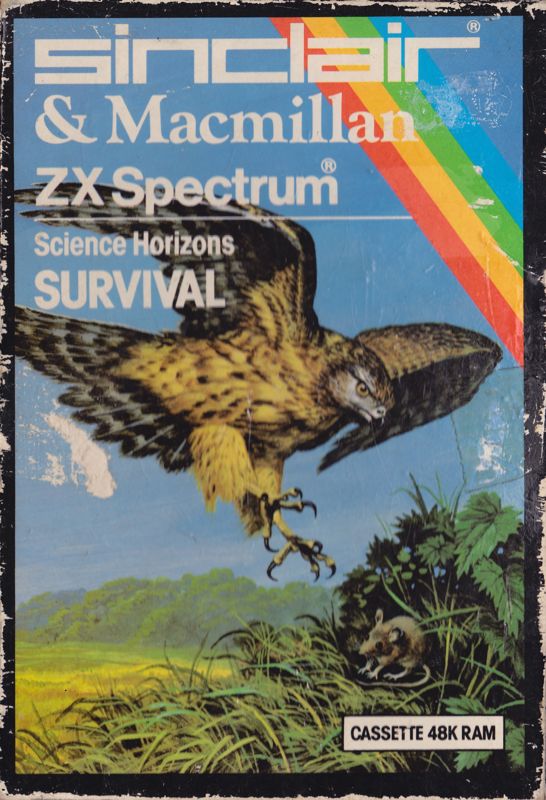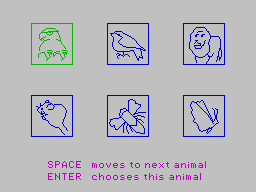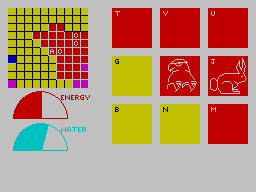Retro Replay Review
Gameplay
The core of Survival lies in its intuitive yet strategic resource management. Players assume the role of one of six creatures—lions, hawks, mice, robins, butterflies, or flies—and must balance energy, water, and hunger levels to keep their animal alive. Each turn requires thoughtful decisions about where to roam: a butterfly might flit toward nectar-rich flowers, while a hawk scouts open plains for rodents. This constant juggling of needs and environment keeps every session fresh and engaging.
What sets Survival apart is its attention to ecological detail. Different biomes—ice caps, jungles, towns, and freshwater bays—impact each creature in scientifically accurate ways. For example, the lion loses energy faster in cold climates, while frogs (if they were included) would struggle outside the water. As you move, other creatures move too, introducing an element of unpredictability that can reward careful planning or punish overconfidence. This dynamic interplay mirrors real-world ecosystems and adds replay value.
Turn length varies by species, reflecting their natural lifespans and metabolic rates. A hawk’s turns are longer, giving you time to scout and plan, whereas a fly’s quick turns keep you on your toes. This design choice not only reinforces the educational premise but also tailors difficulty: younger players might start with low-maintenance creatures like flies or butterflies, while veterans tackle lions or hawks. In that way, Survival scales naturally to different skill levels and keeps learning curve manageable.
Graphics
Visually, Survival embraces a stylized yet informative art direction. Each biome is rendered with distinct color palettes and environmental details that communicate temperature, humidity, and resource availability at a glance. Verdant jungle scenes pulse with green, while ice caps glow in pale blues and whites. This clarity helps players quickly assess risks and opportunities without reading lengthy tooltips.
Creature models are both charming and anatomically plausible. From the subtle wingbeat animation of the robin to the purposeful stride of the lion, each movement reinforces the educational underpinning. Predator-prey interactions play out smoothly, with collision and pathfinding algorithms handling chases, escapes, and ambushes in real time. Poachers, though non-player hazards, are visible on the map and patrol in predictable yet challenging patterns.
The user interface is clean and accessible. Vital stats—energy, hydration, hunger—are displayed as simple bars overlaid on the screen margins, leaving the center free for exploration and immersion. Contextual prompts appear only when needed, such as when you approach a waterhole or edible plant. While purists might hope for ultra-realistic textures, the chosen style strikes the right balance between educational clarity and visual appeal.
Story
Rather than a linear narrative, Survival offers an emergent story driven by your actions and the life cycle of your chosen creature. Each playthrough births a unique tale: perhaps your robin narrowly escapes a hawk’s talons or a mouse finds an unlikely food source in a human settlement. These unscripted moments create personal attachments and make every session memorable.
The educational premise is woven subtly through gameplay events. Environmental facts pop up when you discover a new biome or encounter a rare predator, giving bite-sized lessons about food chains and habitats without breaking immersion. Children learn by doing—experimenting with different species and biomes—and adults can appreciate the scientific accuracy underlying each scenario.
Poachers and natural disasters (like sudden storms or fires in the jungle) add narrative tension. They serve as reminders of real-world threats to wildlife while also providing teachable moments about conservation and human impact. The result is a compelling, sandbox-style story where the stakes are always clear, and every choice—migrate north for cooler climate or stay put for reliable water sources—feels meaningful.
Overall Experience
Survival excels as both an educational tool and an engaging simulation game. Its unique blend of resource management, ecological accuracy, and emergent storytelling ensures that players of all ages remain invested. The variety of creatures and biomes invites countless experiments and teaches valuable lessons about nature’s fragility and interconnectedness.
Replayability is one of the game’s strongest points. With six distinct animals and diverse environments, no two runs feel the same. The balance between strategy and randomness—thanks to moving AI animals and occasionally unpredictable events—keeps the tension high and experimentation rewarding.
While the game leans toward younger audiences with its clear UI and gentle pacing, there’s enough depth to satisfy more seasoned players. Whether you’re a parent looking for an educational experience or a nature enthusiast seeking a unique simulation, Survival offers a well-rounded, thought-provoking journey through the wild.
 Retro Replay Retro Replay gaming reviews, news, emulation, geek stuff and more!
Retro Replay Retro Replay gaming reviews, news, emulation, geek stuff and more!









Reviews
There are no reviews yet.